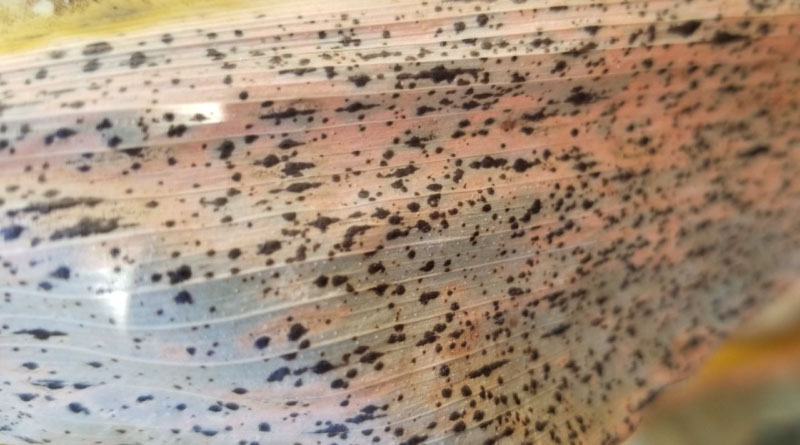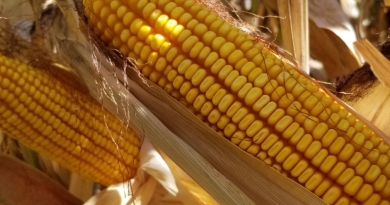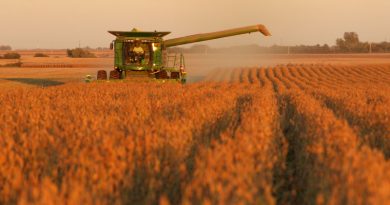Tools to Tackle Tar Spot
Disease pressure in 2022 was relatively low compared to the prior two years. However, tar spot reared its head late in the growing season for the Burrus footprint. The University of Missouri added new counties to the list with the inclusion of Carroll, Harrison and Holt. This reinforces that the spread of tar spot continues to increase geographically moving south and west in the Burrus footprint. As with the arrival of any new disease, it garners growers’ attention for the upcoming growing season. Many growers are thinking about what tools and approaches to consider for managing tar spot next year. In this article, I’ll cover some common questions that arise and provide resources to help you make informed management decisions in 2023.
Tar Spot History
A pathogen native to Latin America, Phyllachora maydis made its way to the Midwest in 2015 and is the cause of tar spot. Tar spot produces dark structures called ascomata that develop on corn leaves. These fruiting structures are impregnated into the leaf and cannot be rubbed or scraped off without damaging the plant. Each ascomatum produces spores that can be windblown long distances. These structures can overwinter on corn residue, releasing spores the following season.
Environmental conditions are the biggest driver for tar spot. Notably, ample moisture through rainfall (>5.9” monthly), humidity (>75%), or sustained leaf wetness (>7 hours daily) promote development. This can contribute to the disease being more problematic under irrigated conditions. Moderate daily temperatures in the 60s to 70s also favor development. Over the last 3 years, we generally find that tar spot will appear south of US Hwy 36/I-72 in late August and early September when corn is rapidly approaching black layer.
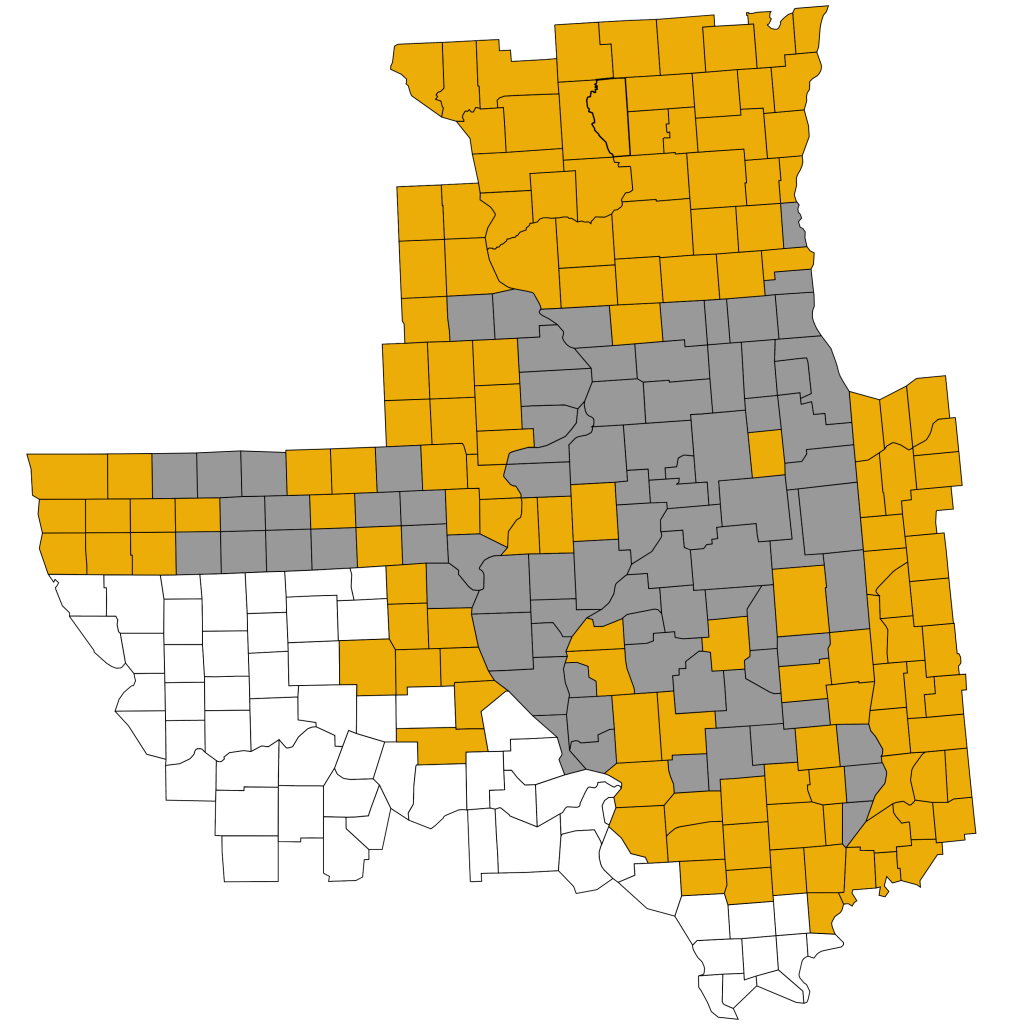
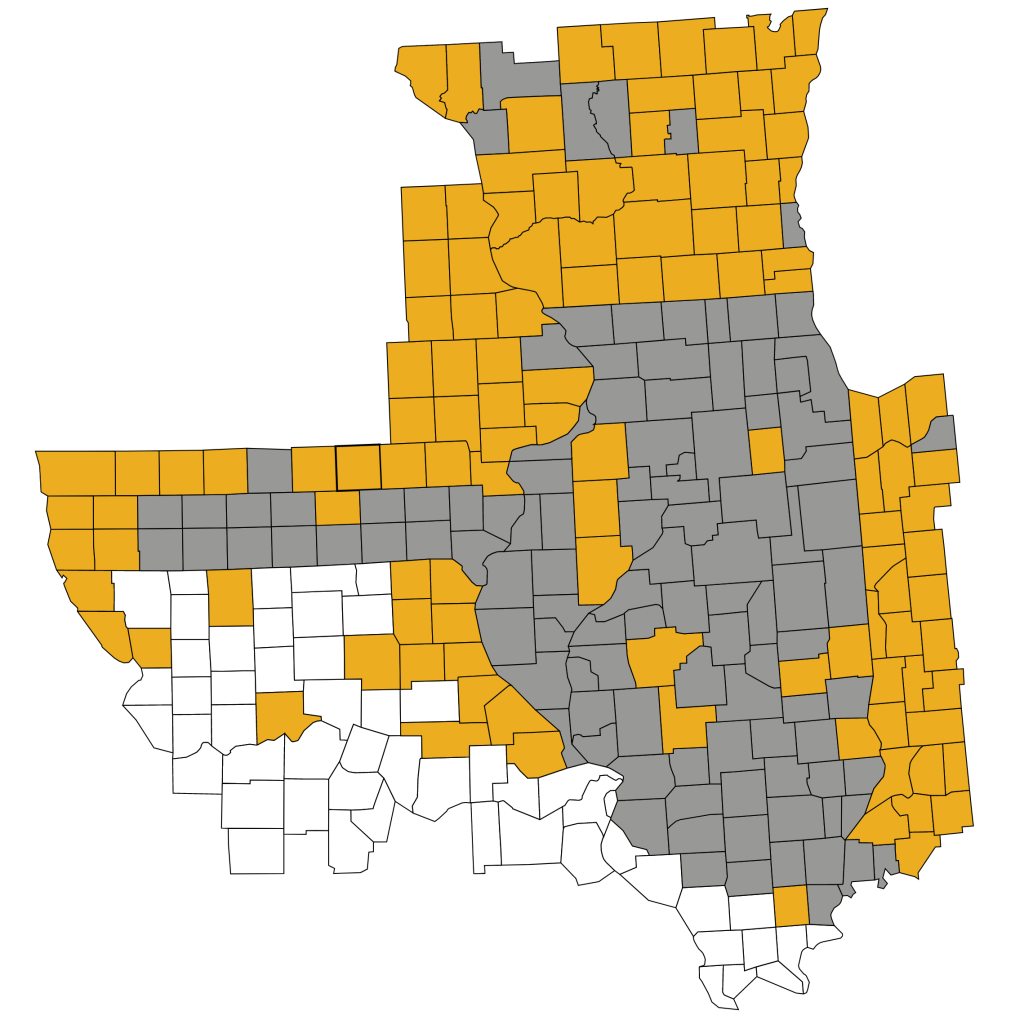
Reported geographic distribution of corn tar spot for 2021 and 2022 via: https://corn.ipmpipe.org/tarspot/.
Hybrid Susceptibility
While differences in hybrid susceptibility to tar spot exist, there is currently no known completely resistant germplasm available. Fields with historically severe tar spot are at greater risk for future development. This makes selecting hybrids with high tar spot ratings prudent.
Starting in 2022, Burrus developed tar spot hybrid ratings to aid in this process. I should note a few caveats regarding the complexity of this information. We compiled our ratings through opportunistic observation across multiple locations and in some instances, multiple years. This allows for a fairly accurate assessment of tar spot susceptibility in our lineup. However, ratings can be influenced on the initial presence of tar spot and the environmental conditions which sustain its development. To be clear, hybrid ratings for tar spot may fluctuate over time as we continue to monitor hybrid susceptibility in the future. It is important to realize there is currently no known process to inoculate trials with tar spot to facilitate uniform disease pressure and timing.
Management Considerations
- Understanding which conditions favor the development of tar spot and scouting for its development can prevent issues come harvest. Managing irrigation to minimize leaf wetness can reduce the severity of disease development. Notably, the Tarspotter app developed by the University of Wisconsin can help indicate when conditions are favorable for tar spot development for specified fields.
- Fungicides have proven to be effective in limiting the effects of tar spot on yield and plant standability. Fungicide applications with two or more modes of action are more effective in suppressing tar spot. VT-R2 has reliably been the most effective in protecting yield and standability; however, an additional fungicide application may be warranted if environmental conditions are conducive for continued tar spot development. The disease is polycyclic, meaning it can continue to develop within the crop canopy under sustained conditions. The most consistent response with a second fungicide pass is a slight improvement in stalk strength and standability. A great resource for fungicide efficacy against tar spot and other diseases is published by the Crop Protection Network.
- Scouting hybrids for late season standability issues is recommended to prioritize fields that tar spot has detrimentally affected for early harvest.
- Crop rotation and residue management can help reduce overwintering ascomatum and help lower tar spot severity in the following season.
- Review Burrus Seed’s hybrid tar spot ratings.
As always, if you have any questions regarding tar spot or other crop concerns, contact your Burrus Representative.
Article written by Dana Harder, CCA Burrus Seed Field Agronomist. Follow Dana on Twitter.

